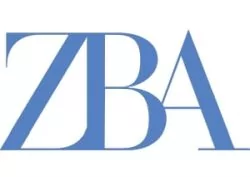Introduction
The Supreme Court (mostly speaking through Justice (retd.) Nariman) in a series of rulings starting from Innoventive Industries set the jurisprudence for the NCLTs to decide applications filed by financial creditors (FCs) under the Insolvency and Bankruptcy Code, 2016 ("IBC"). These rulings to a great extent saved the nascent insolvency regime of India and assisted in progressive development of the IBC. Simply put, the Supreme Court in multiple cases has ruled that under Section 7 of the IBC the adjudicating authority is only required to be satisfied that a default has occurred. The moment the adjudicating authority is satisfied that a default has occurred the application must be admitted – a tick box exercise. The Supreme Court's ruling in Vidarbha Industries Power Limited v. Axis Bank Limited1("Vidarbha ") upturns and unsettles the well-established jurisprudence and ignores the Supreme Court's earlier rulings. A brief overview of the pain points.
Misadventure
The Vidarbha ruling appears to be a misadventure on multiple accounts: (a) the judgment relies overly on the literal interpretation of word "may" in Section 7 of the IBC losing sight of the economic rationale of the IBC. Economic legislations must be construed commercially. The Court's reasoning overlooks the legislative intent underlying the IBC. The Supreme Court's earlier rulings which requires the adjudicating authority to be satisfied on existence of default without venturing in the history of default is correct and was overlooked; (b) the judgment by conferring discretionary power to the NCLTs in deciding section 7 applications, without setting any guidelines for exercise of discretion, will lead to inconsistent rulings by different benches on somewhat similar facts; (c) the judgment leads to anomaly in as much as it maintains the existing position of allowing mandatory admission of applications filed by operational creditors (OCs) (subject to satisfaction of requirements of section 9 of IBC) but not that of financial creditors. This distinction is not contemplated by the IBC. Financial creditors have a superior status under the IBC. Financial debts to banks and financial institutions are well documented and defaults are easily verifiable. A more fundamental point is ultimately most creditors seeking to utilise the IBC, whether banks or financial institutions, have depositors' monies which needs protection. The Vidarbha Judgment ignores all these which were acknowledged by earlier Supreme Court rulings – especially Essar Steel2.
Impact on IBC
As of March 2022, 66% of the ongoing corporate insolvency resolution process (CIRPs) have crossed 270 days' time period. From April 2021 to March 2022, 121 of the CIRPs took on an average 711 days for completion – this is more than twice the stipulated 333 days period. Clearly, the timelines contemplated by the IBC have not been maintained. The delays in the insolvency process is mostly attributed to protracted litigation by promoters or debtors, heavy backlog on NCLTs and lack of commercial acumen of members of NCLTs. The Vidarbha Judgment will be an unhealthy infusion to the existing uncertainty in a process which is already struggling on multiple fronts.
Conclusion
The Vidarbha judgment is not in sync with either market expectations/requirements or the objectives of the IBC. This ruling from the top court will create grave challenges for the banking and insolvency system. It is in the interest of all stakeholders that the judgment is reviewed by a larger bench of the Supreme Court at the earliest or the IBC is amended to clarify that the NCLT's have no discretion when adjudicating debts of financial and operational creditors.
Footnotes
1 Civil Appeal 4633 of 2021.
2 CIVIL APPEAL NO. 8766-67 OF 2019
The above is a generic analysis and should not be regarded as a substitute for specific advice based on the facts of a client's objectives and specific commercial agreements reached. Please do reach out to us at mail@zba.co.in for any queries.


